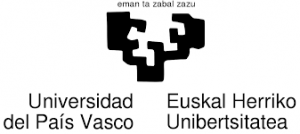Partner:
University of the Basque Country
The rise of Mobile Broadband (MBB) usage comes together with an increasing awareness in quality of service as perceived by customers. Whilst many approaches from both the standardisation bodies and the scientific environment have tried to define tools to measure and represent objective and subjective network performance, no consensus has been reached regarding the most feasible and accurate measurement methodology.
Taking advantage of MONROE MBB networks measurement deployment, MARiL has developed and contributed open source multi-layer measurement tools that implement the most significant standardised Internet access measurement methods. In this regard, MARiL has covered both main TCP-based and IP-layer model-based approaches. Regarding the validation of this proposal and seeking for a deep study among different cellular contexts of use, several tests have been designed and carried out in the MONROE’s Pan-European deployment. In order to measure the QoS assessments under measurable network circumstances (i.e. with metadata), we have considered the least variable conditions with static nodes. These nodes are capable of providing fair comparisons between both measurement philosophies in order to validate them in MBB. Hence, MONROE will benefit from MARiL’s for the performed validation and addressing of MONROE as the main large-scale platform in Europe, as well as for its developments and studies for future open calls and the further research advance.
Considering the massive presence of TCP traffic in overall Internet traffic as well as the importance of the transport layer behaviour in the experienced performance with TCP-based measurements, it has been critical to analyse to which extent the impact of the selected congestion control algorithm (CCA) has an effect in the achieved outcome. In this sense, MARiL has evaluated different CCAs in distinct cellular use-cases so as to decide the best option among the CCAs and be able to foster future real-time CCA selection. With the recent inclusion of TCP BBR (Bottleneck Bandwidth and Round-trip propagation time) in the Linux kernel, the possibilities in the CCA family are greater than ever. In these lines, we have evaluated BBR in comparison with other commonly used CCAs and found than even thought that depending on the network conditions and flow type we may perceive differences, as a general rule BBR performs in a more efficient way than its opponents. However, under certain network conditions BBR is prone to share the bandwidth unfairly, either suppressing other CCAs flows or its own competing flows.
Realising that mobility is a major differentiator between cellular and fixed networks, a proper understanding of how direction and speed impact the interaction between TCP and the radio environment is required. MARiL complements previous works on 4G and the forthcoming 5G networks in that it systematically studies the performance of TCP in both medium- and high-velocity scenarios; and both when a mobile user is moving closer to and farther from a cell tower, i.e., both in case of continuously increasing and continuously decreasing radio signal strength. This mobility study considered both 4G latencies and mobility under lower latencies close to the expectations for 5G. The studied CCAs have covered a wide range of TCP possibilities with loss-based (CUBIC and NewReno), combined loss- and delay-based (with–Westwood+- or without bandwidth estimation -Illinois-), delay-based (CDG) and model-based (BBR) variants.

